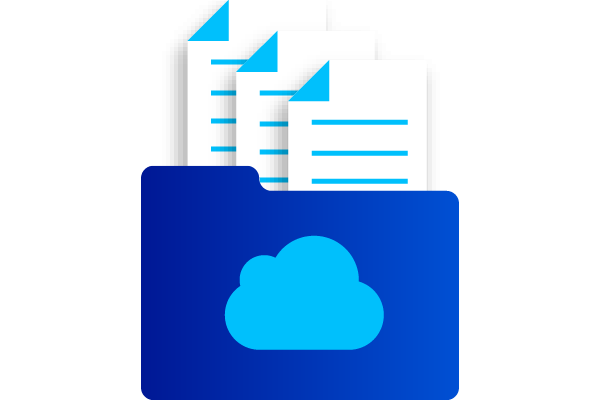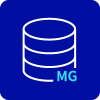What is JSON?
JSON, or JavaScript Object Notation, is a lightweight and human-readable data interchange format. Think of it as a universal language that computers and applications use to communicate and share information. It's like a translator for internet systems: it makes sure that different systems can understand each other even if they're built with different technologies.

Basic Structure and Syntax of JSON
At its core, JSON is all about organising data using a simple data structure for either the use of a number or a string. It uses curly braces {} to represent objects, where objects used contain key-value pairs. A string can be used (enclosed in double quotes), and the value can be various data types.
Data key-value pairs are separated by colons, and multiple pairs within an object are separated by commas. JSON also uses square brackets [] to represent arrays, which are ordered lists of values.
JSON Data Types
JSON language supports a handful of essential data types:
- Strings: Text strings enclosed in double quotes (e.g., "Hello, world!").
- Number: Numerical values without quotes (e.g., 42, 3.14).
- Boolean: Represents true or false values.
- Null: Represents the absence of a value.
- Object: A collection of key-value pairs enclosed in curly braces.
- Array: An ordered list of values enclosed in square brackets.
- Key-Value Pairs: The Heart of JSON organisation
Key-value pairs and nesting
Key-value pairs are the fundamental inside programming data building blocks of JSON objects. Using number function pairs provide a way to label and access specific pieces of data within the structure. Think of them as mini-dictionaries where the key is the word you're looking up and the value is the definition.
It’s worth noting that one of JSON's strengths is its ability to nest objects and arrays within each other. This allows you to represent complex, real-world data structures. For example, an object representing a person might contain nested data objects for their address and contact information.
JSON Arrays
JSON arrays are perfect for storing ordered lists of items. Arrays can contain values of any JSON data type, including other arrays or objects, providing flexibility for organising various kinds of data collections.
With JSON language, using the array acts as a versatile container, holding an ordered collection of values. Arrays can span various types, including numbers, booleans, null, objects (which are key-value pairs), and even other arrays.
The text data within JSON, technically referred to as strings, is enclosed in double quotes, allowing for the representation of human-readable information, labels, and other textual content. While arrays provide structure for collections, the "type" keyword helps define the specific nature of data within JSON objects, further enhancing the organisation and clarity of information using arrays.
JSON Schema
JSON Schema is a vocabulary, the schema allows you to annotate and validate JSON documents. You can think of a schema as a number blueprint or a contract for your JSON data. Schema defines the structure, the types of values, and any constraints your JSON data must adhere to.
By using JSON Schema, whether a number or string, you can ensure that your JSON data is well-formed and conforms to a specific schema. Schema helps maintain data integrity and improve communication between different systems, and JSON schema facilitates automated validation processes.
JSON examples
JavaScript Object Notation is versatile and you can see it using it in real-world applications, spanning a vast range of domains. In the realm of social media, JSON is used to structure and exchange posts, comments, user profiles, and other interactive elements. When you scroll through your feed or like a friend's photo, JSON is working behind the scenes to deliver that content seamlessly.
Data APIs, the backbone of modern web communication, heavily rely on JSON for number and data exchange. Whether for example you're using JSON for fetching weather updates, retrieving product information from an e-commerce platform, or interacting with any web service, chances are JSON is the format used to package and transmit the requested data.
Numerous programming libraries and tools inside JSON further streamline JSON handling. Popular options include Jackson for Java, Newtonsoft.Json for .NET, and jsonlite for R. These tools offer advanced features for parsing, validating, and manipulating JSON data, empowering developers to work efficiently with this ubiquitous format.
By exploring these examples and tools used, you'll gain a deeper appreciation for JSON's pervasive presence in the digital world. In the next section, we'll delve into the distinctions between JSON, XML, and HTML, shedding light on their unique roles and applications.
What is the difference between JSON vs XML and HTML?
While using JSON, XML, and HTML language all play crucial roles in the digital landscape, they serve distinct purposes and exhibit fundamental differences – just the same as when we think about SQL vs. NoSQL, for example.
JSON and XML are both markup languages primarily used for data interchange. However, JSON's simpler syntax and focus on key-value pairs make it more lightweight and easier to parse compared to XML's tag-based structure. This often translates to faster processing and reduced overhead, particularly in web applications where efficiency is paramount.
Choosing between JSON and XML
The choice between whether JSON and XML is used often hinges on specific data requirements for example. JSON's conciseness and readability make it a popular choice for API and data exchange scenarios where human interaction might be involved. On the other hand, XML's extensibility and support for namespaces can be advantageous in complex data structures or when strict validation is necessary.
What about HTML?
In contrast to JSON and XML language, HTML's primary function is to define the structure and presentation inside any number of web content pages. It uses tags to specify headings, paragraphs, images, links, and other elements that shape the visual layout of a webpage. While HTML can embed data within its tags, it's not optimised for data interchange in the same way as JSON or XML.
When deciding between JSON, XML, or HTML, consider the specific use case. If your primary goal is to exchange structured data between applications, JSON's simplicity and efficiency often make it the preferred choice.
Compared to JavaScript Object Notation, XML might be more suitable for scenarios requiring complex data hierarchies or strict schema validation. And if you're focused on presenting content in a web browser, HTML is the undisputed king.
Understanding these distinctions, for example, empowers you to select the most appropriate format for your needs, ensuring seamless data exchange and optimal user experiences. In the following section, we'll explore the compelling reasons why working with JSON offers numerous advantages in modern development.
Why work with JSON?
Using JavaScript Object Notation has emerged as a cornerstone of modern development for both number and string data due to its numerous advantages that streamline data handling and enhance application efficiency. JSON's lightweight nature, stemming from its concise syntax and lack of verbose tags, contributes to faster parsing and reduced bandwidth consumption.
This translates to improved programming performance inside, particularly in web applications where every millisecond counts. Furthermore, JSON's human-readable format makes it easy for developers to understand and debug, facilitating collaboration and troubleshooting.
JSON in Web Development
When we’re developing websites, JSON's seamless integration with JavaScript number amongst the reasons it is the ideal choice for data exchange between the frontend and backend.
Using JavaScript Object Notation has the ability to represent complex data structures in a structured manner allows for effortless communication between different components of a web application, enabling dynamic content updates and interactive user experiences.
JSON and APIs: The Perfect Match
The rise of APIs has further solidified JSON's position as the go-to format for data interchange. Its simplicity and compatibility with various programming languages make it the perfect match for exposing and consuming web services.
Whether you're building a mobile app that fetches data from a remote server or integrating third-party services into your application, JSON provides a reliable and efficient mechanism for seamless communication.
JSON's Role in Data Storage and Configuration
Beyond web development and APIs, JSON's versatility extends to data storage and configuration. Its structured format lends itself well to storing and retrieving information in databases or file systems.
What’s more, its human-readable nature makes it a convenient choice for configuration files, allowing developers to easily modify settings and parameters without delving into complex code.
When should I use JSON?
JSON truly shines and is used when you need to exchange structured data between applications, particularly in the context of web APIs.
JavaScript Object Notation’s simplicity, readability, and widespread support make JavaScript Object Notation the ideal choice for transmitting information like user profiles, product catalogs, weather updates, or any other data that needs to be shared seamlessly across different systems.
Configuration files also benefit greatly from JSON's human-readable format. It allows developers to easily define and modify settings, making applications more adaptable and customisable.
However, JSON may not be the optimal example or choice for scenarios where extremely large datasets or binary data are involved. In such cases, more specialised formats like Protocol Buffers or Avro might offer better performance and efficiency.
Ultimately, choosing the right data format to use depends on your specific requirements. Weigh factors like data size, complexity, human readability, and compatibility with your chosen technologies.
JSON's versatility makes it a strong contender in most cases, but don't hesitate to explore alternatives when they align better with your project's unique needs.
Why is JSON so popular?
JSON's meteoric rise in popularity can be attributed to a confluence of factors. Its simplicity, readability, and lightweight nature make it incredibly accessible to both humans and machines.
Compared to its predecessor, XML, JSON's streamlined syntax and lack of verbose tags significantly reduce complexity, leading to faster parsing and improved performance. Furthermore, its seamless integration with JavaScript, the lingua franca of the web, has cemented its role as the de facto standard for data exchange in web applications.
JSON's impact on the modern web is undeniable. It has revolutionised how applications communicate, enabling the dynamic and interactive experiences we've come to expect.
From social media feeds to real-time updates and personalized content, JSON's efficient data handling underpins much of the web's functionality. As technology continues to evolve, JavaScript Object Notation adaptability and widespread support position JavaScript Object Notation for a bright future. JavaScript Object Notation’s role and the fact that it is used in emerging fields like the IoT and artificial intelligence further underscores its significance, ensuring that JSON will remain a cornerstone of the digital landscape for years to come.
OVHcloud and JSON
At OVHcloud, we recognise the important role of JSON in modern application development. We offer a range of hosting solutions for JSON applications:

MongoDB-as-a-service, offered by OVHcloud, is a cloud-hosted database service built on the MongoDB engine. Our MongoDB solution boasts high availability, scalability, and security, making it a suitable choice for businesses seeking a dependable and adaptable database solution.

We offer budget-friendly web hosting that prioritizes quality and reliability. You expect dependable performance, robust security for you website and data, all at a price that won't strain your budget.

Even our basic plan includes a domain name, storage space, email addresses, and FTP access. More advanced plans offer additional features, such as high-performance resources and website backups. OVHcloud also offers managed hosting, which means they will take care of the technical aspects of running your website.
Whatever the size or complexity of your application requirements you’ll find a solution with OVHcloud that’s priced just right – and with all the capacity you need.